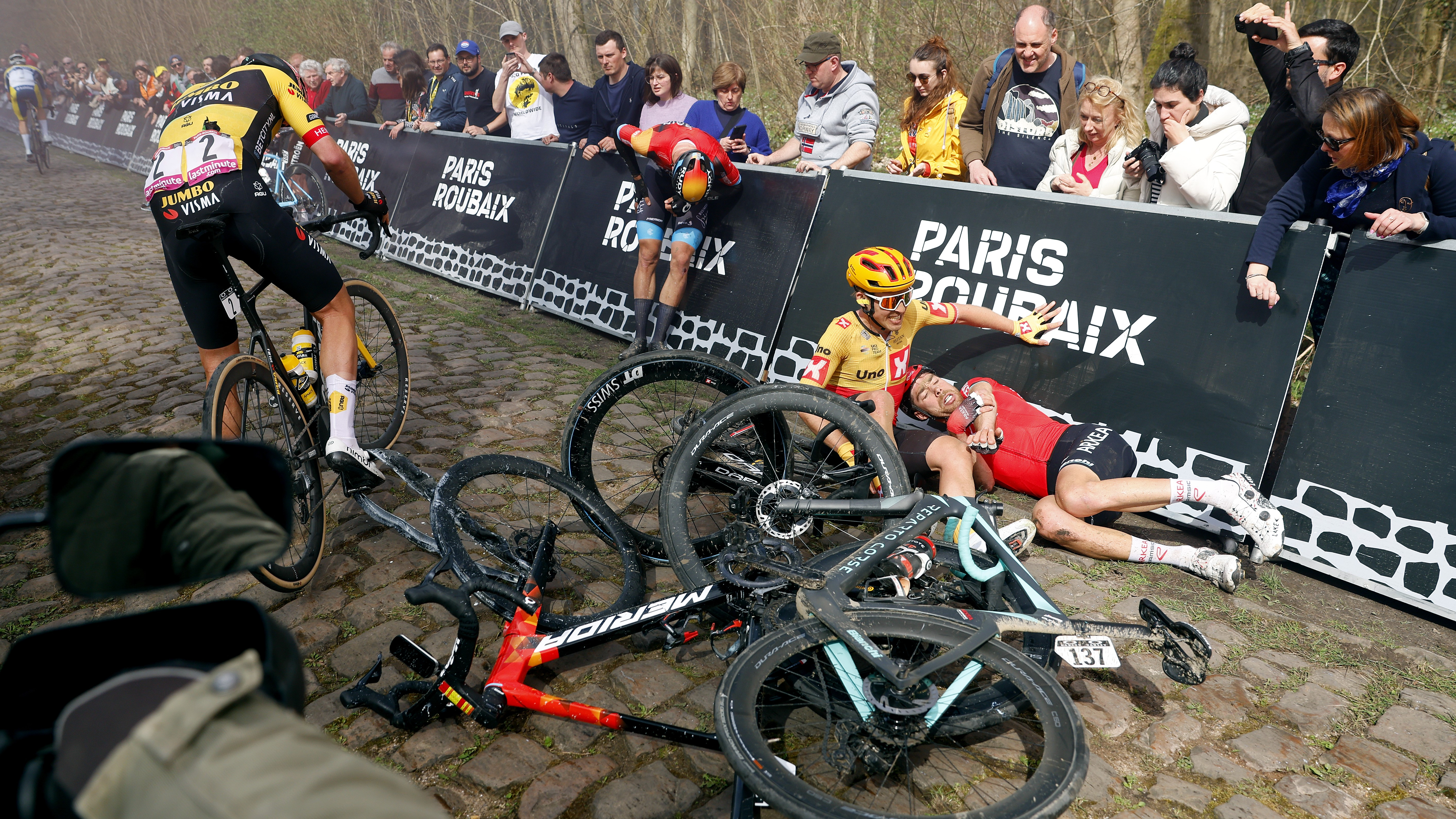
The UCI has issued its first guidelines on the use of hookless rims and tubeless tyres for the short, medium and long term today. And has requested teams, commissaries and riders report any hookless/tubeless incidents.
As a result of incidents involving hookless rims and tubeless tyres at the UAE Tour and Strade Bianche which sparked much debate online regarding the pairing of hookless rims and tubeless tyres and rider safety, the UCI issued a short statement on the 1st of March explaining that it was examining the matter.
The sport's governing body has now issued additional guidelines on the technology. In a press release, the UCI has reminded teams of the requirements in the UCI Technical Regulations regarding compliance with ISO standards. These standards provide a compatibility framework for tyre and rim widths.
The statement also outlined the point that the UCI has noted ISO standard norms may not have always been respected and 'does not rule out the possibility that this may have been a contributing factor in some of the incidents encountered'.
The UCI also recognised the point that compliance with the ISO standards by teams and riders can be made more complex because manufacturers often use the compatibility recommendations provided by the European Tyre and Rim Technical Organisation (ETRTO) which have not always matched up with ISO standards.
In the medium term, the UCI will consider recommendations for the 2025 season from SafeR - a new project aimed at improving race safety. The UCI has mandated SafeR to 'explore potential improvements and clarifications regarding the use of hookless rims with tubeless tyres that would be relevant to incorporate in the UCI regulations'. In particular, the UCI requests that teams, commissures and riders report any incident involving hookless rims with tubeless tyres that may occur to ensure that the circumstances can be analysed in detail.
Long term, that statement explains that the UCI will examine the appropriateness of the current requirements for the use of different equipment and specifically wheels in competition to ensure the requirements ensure rider safety, and do not 'rely exclusively or for the most part on the diligence and internal processes of manufacturers'.







